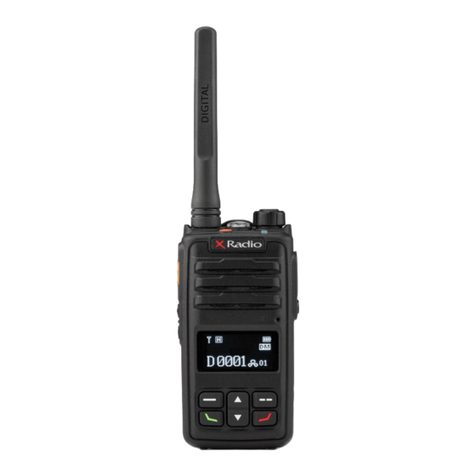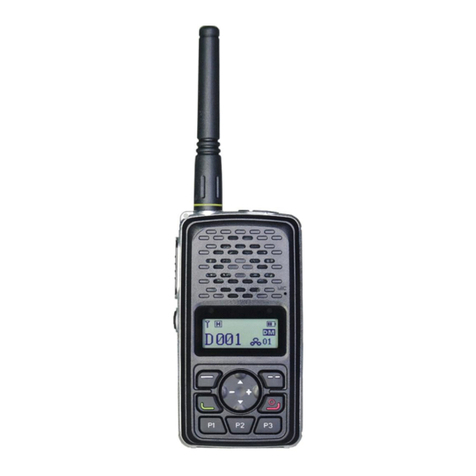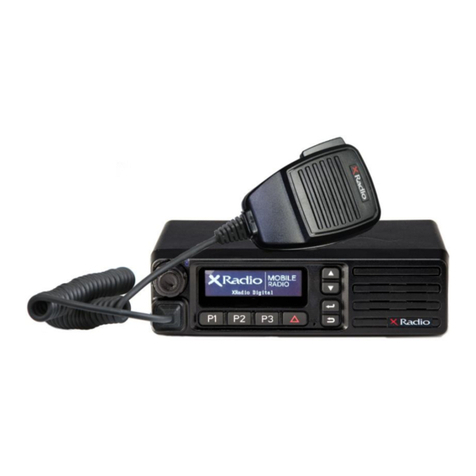
1. DX-6000 series features
DX-6000 series is designed to provide ease of use the functions of digital radio and it is an
easy grip radio for the hand. It’s developed for the consumer safety and convenience in
complex public places such as military, fire department, construction, industrial field. In addition,
it works in dual (analog/ digital) mode and is compatible with existing analog radio currently.
Digital mode is made up for analog radio’s weaknesses such as sound quality, call distance,
and usage time.
The main functions of DX-6000 series are as follows
64 Zones 1024 channels selection (1zone = Max 1024channels)
The total number of channels can be set up to 1025 channels
4.8/1 Watt RF Power
Send/ receive text messages (up to 40 characters), up to 10 sentences
Encryption Mode (AES128. 196. 256)
TX Interrupt
Lone Worker
Man down function(optional)
BCL / BCLO
Time-Out Timer (TOT)
Emergency / siren function
Built-in flash lamp
Vibration(optional)
Voice recording and playback
Mixed channel(analog / digital0
GPS (optional)
5 levels VOX(Voice Operated Transmit)
5 levels S.Q selection (support analog radio).
Remote Radio Stun / Kill / Revive
1Watt audio output
UDC accessory connector for waterproof(IP67)
OLED Display
DC+7.2V Li-ion / 2,600mAH High capacity battery






























